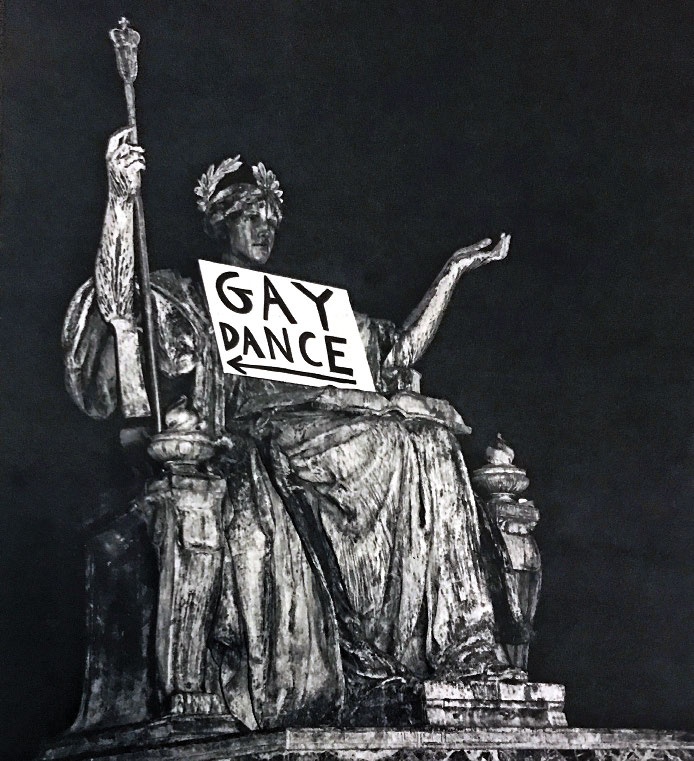Columbia College | Columbia University in the City of New York
Earl Hall Nominated for National Register

Sign o’ the times: Alma Mater points the way to the party in this 1974 photo.
1974 Columbian
A sixth Columbia building could be headed for landmark status.
Earl Hall, which sits west of Low Library, will be nominated to the National Register of Historic Places as part of the NYC LGBT Historic Sites Project. The emphasis will be on the building’s significance in LGBT history, dating to the 1960s, when the school’s groundbreaking gay student group found a home there.
The historic sites project — led by co-founders and directors Andrew Dolkart GSAPP’77, professor of historic preservation at the Architecture School; Ken Lustbader GSAPP’93; Jay Shockley GSAPP’80; and staff member Amanda Davis GSAPP’06 — seeks to identify, document and record sites of LGBT significance before 2000. Five-hundred sites have already been identified, and 100 are mapped on the group’s website.
Columbia was the first institution of higher education in the world to have a gay student group, The Student Homophile League, founded in 1966 by “Stephen Donaldson,” the alias of Robert Martin ’69. The University’s then chaplain, the Rev. John Cannon, was supportive and gave the group space in Earl Hall to gather.
Columbia’s Committee on Student Organizations approved the Homophile League on April 19, 1967, and Martin immediately sent a press release to local media outlets. On May 3, 1967, The New York Times put the story of the University’s gay group on its front page, to the chagrin of the administration. In 1970, the Homophile League’s successor group, Gay People at Columbia-Barnard, began holding dances in Earl Hall on the first Friday of every month — the first of its kind at any school. The dances were open to the public and became popular with students and non-students. “I’m sorry to say that I never went to one; I was too shy,” Dolkart says.
Dolkart and the other founders will submit a proposal for identifying Earl Hall’s significance to New York’s State Historic Preservation Office this fall; after review a recommendation will be made and, if approved, the building will be listed on the New York State Register of Historic Places. The Department of the Interior will then review for the National Register.
Columbia buildings already on the National Register are Pupin Hall (added in 1966), Casa Italiana (added in 1982), Low Library (added in 1987) and Philosophy Hall (added in 2003). St. Paul’s Chapel was listed on the State Register in 1978.
Any alumnus/a who attended a dance at Earl Hall and would like to be interviewed for this project can contact Dolkart.
Issue Contents
Published three times a year by Columbia College for alumni, students, faculty, parents and friends.
Columbia Alumni Center
622 W. 113th St., MC 4530, 6th Fl.
New York, NY 10025
212-851-7852
cct@columbia.edu
Columbia Alumni Center
622 W. 113th St., MC 4530, 4th Fl.
New York, NY 10025
212-851-7488
ccalumni@columbia.edu

